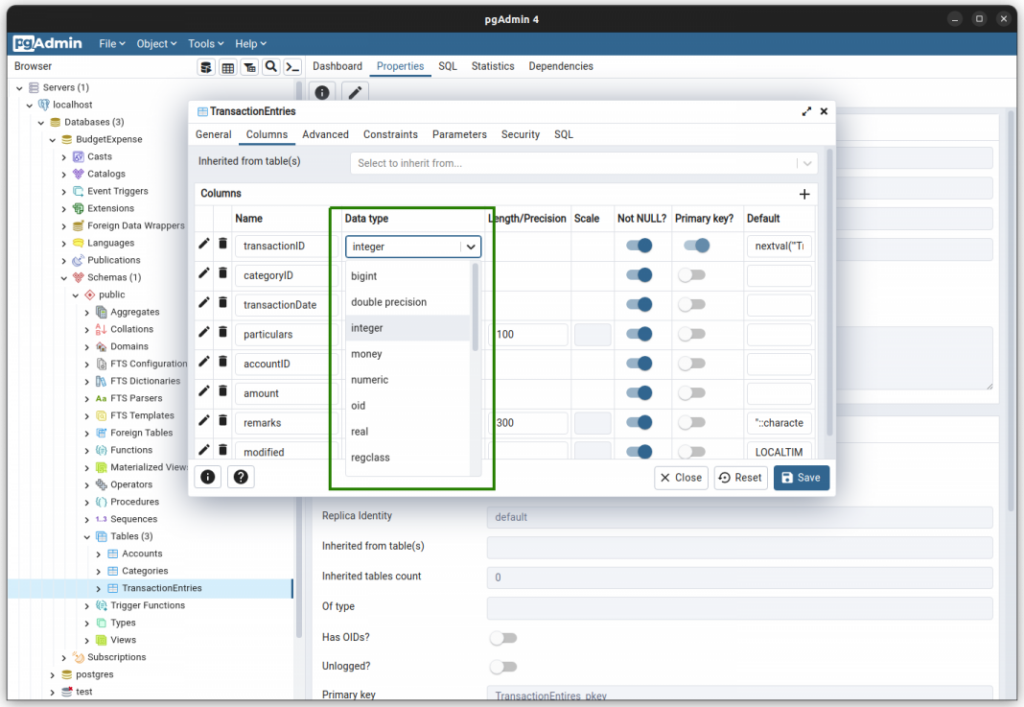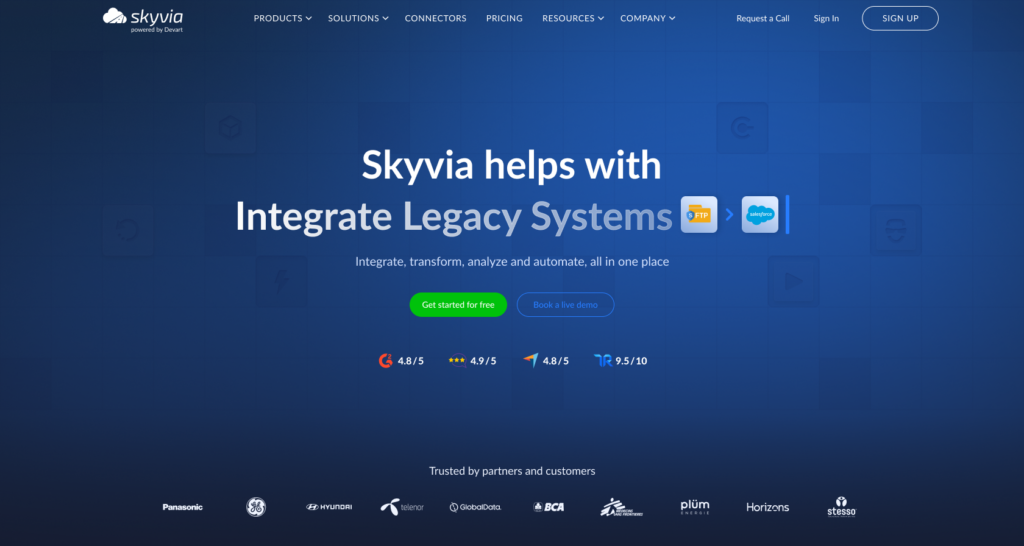If your organization already implements PostgreSQL, you might have asked a question: “Can PostgreSQL be used as a data warehouse?” Many companies have the same inquiry related to the capabilities of this DB. A little spoiler: such Silicon Valley giants as Apple, Meta, Cisco, Spotify, Yahoo, and others use PostgreSQL on a daily basis.
In this article, we aim to dispel any doubts related to PostgreSQL for a data warehouse. We explain in which cases this RDBMS performs best and how it can benefit analytics. We also talk about other data warehouses as an alternative to PostgreSQL. What’s more, we introduce Skyvia as a powerful option for collecting and pre-processing data from your organizational sources and loading it into a DWH.
Table of Contents
- What Is a Data Warehouse?
- Compelling Reasons to Use PostgreSQL for Your Data Warehouse
- The Hurdles to Overcome: Where PostgreSQL Falls Short
- PostgreSQL vs. Snowflake, BigQuery, and Redshift
- From Standard Database to Analytics Powerhouse: Optimization Tips
- The Sweet Spot: Ideal Scenarios for a PostgreSQL Data Warehouse
- Conclusion
What Is a Data Warehouse?
To eliminate any uncertainties about what a data warehouse exactly is, let’s outline its clear definition.
“A data warehouse is a central repository where information collected from multiple sources is stored. It supports data analysis, machine learning (ML), and artificial intelligence (AI).”
Collecting, storing, transforming, and elaborating data within a DWH offers faster time to insights. While several decades ago, DWH were primarily located in the company offices, on premises, now businesses prefer their cloud-based analogs.

The main purposes of DWH are usually the following:
- Consolidate data from various tools, apps, services, systems, and other sources.
- Report building and dashboard creation.
- Support OLAP (Online Analytical Processing) workloads.
- Maintain historical records for predictive analytics, ML, and AI.
There are also different DWH types, and the most popular among them is the enterprise data warehouse. It appears as a single source of truth (SSOT) for large organizations that collect and store data from the company-wide services. Such repositories support a broad range of data types, embed powerful analytical capabilities, and are based on a scalable architecture.
Compelling Reasons to Use PostgreSQL for Your Data Warehouse
We have just mentioned that PostgreSQL is good for OLAP, a technology that operates complex queries at high speed, enabling multidimensional analysis based on large information volumes in a data warehouse or a data lake.
PostgreSQL is also very popular for online transactional processing (OLTP). This concept is about the real-time execution of transactions executed by many people at the same time. OLTP enables rapid and accurate data processing behind online banking, e-commerce, and ATMs.
Apart from being suitable for OLTP and OLAP, PostgreSQL has many other advantages and strengths to offer.
Cost-Effectiveness
PostgreSQL is an open-source solution, and thus is free to use. It’s possible to download and install it at no cost on your preferred operating system. Such affordability makes this RDBMS attractive even for small teams and startups.
Robust SQL Engine
Each RDBMS has an SQL engine, comprising a parser, optimizer, and executor as a rule. Even though these engines operate in the same language, they differ from one another, which makes different DBs distinctive.

The SQL engine of PostgreSQL is robust and mature since it supports even the most complex queries and advanced SQL features.
- JSONB data types for semi-structured data.
- Common Table Expressions (CTE).
- Complex JOINs.
- Multiversion Concurrency Control (MVCC).
- Indexing for optimized performance.
- Extensions like cstore_fdw, zheap, and duckdb_fdw to overcome the limitations of row-based storage and reduce I/O for analytical queries.
- TimescaleDB for time-series data that is often used in modern analytics.
Wide Compatibility
PostgreSQL can be installed and run on all popular operating systems of today, such as Windows and Linux.
It supports not only SQL but also other programming languages. You can interface with a database using Python, Java, C++, Go, Node.js, Ruby, .NET, and some other procedural languages.
Partitioning and Advanced Indexing
PostgreSQL supports basic partitioning when there is a need to logically split a large table into smaller pieces. Such a procedure allows you to improve query performance dramatically in certain situations.
This RDBMS also employs indexing, which tends to enhance database performance in general and retrieve specific data faster. PostgreSQL provides support for several index types: B-tree, Hash, GiST, SP-GiST, GIN, and BRIN.
Vibrant Community and Ecosystem
Being an open-source tool, PostgreSQL heavily relies on an active community. It’s the place where DB users ask for configuration help, report on best practices, discuss bugs, provide recommendations, and share other experiences related to the database setup and use.
The Hurdles to Overcome: Where PostgreSQL Falls Short
Despite its numerous benefits, from a powerful SQL engine to compatibility with operating systems and programming languages, PostgreSQL has some limitations on the other side of the coin.
This mainly includes restricted scalability, security vulnerabilities, and concurrency issues. So, let’s take a close look at these hurdles and discover possible mitigation strategies.
- Row-based storage. In this kind of data storage architecture, information is stored sequentially, row by row, where each row represents a complete record. However, such storage organization is slower when it comes to heavy workloads since it’s necessary to scan the entire row. Instead, columnar databases like Google BigQuery make aggregation operations easier and analytics faster.
- Limited scalability. PostgreSQL is known to be less flexible and scalable compared to distributed systems. This particularly makes sense when elaborating on large datasets. However, there is an option to scale beyond several TBs by applying sharding techniques.
- Concurrency bottlenecks. When executing OLAP-related queries, which are typically long-running and resource-consuming, other operations may slow down. This can considerably impact the overall database performance. Therefore, you need to carefully fine-tune your PostgreSQL instance by implementing isolation strategies.
- Manual maintenance. PostgreSQL configuration as a data warehouse and its further maintenance requires much effort from dedicated database experts. This also involves continuous backup creation and vacuuming. Unlike cloud-based DWH, there is no serverless autoscaling, which usually simplifies database tuning.
- Security vulnerabilities. Given that PostgreSQL is open-source, its codebase is exposed to the public. What’s more, it might lack security mechanisms that correspond to modern safety protocols and international standards. As a result, this data warehouse becomes vulnerable to attacks.
PostgreSQL vs. Snowflake, BigQuery, and Redshift
Even though PostgreSQL is very popular among organizations of various sizes in different industries, it’s not the only data warehouse option in the market. Such big players as Amazon Redshift, Google BigQuery, and Snowflake are also extremely popular among companies.
So, let’s have a quick look at all these DWH in the comparison table below.
| Data warehouse | Architecture | Scalability | Cost | Top Use Case |
|---|---|---|---|---|
| PostgreSQL | Monolithic | Limited | Free | Ideal for startups and SMBs with limited budget but with existing PostgreSQL expertise |
| Snowflake | Cloud-native architecture with separate compute and storage layers | Highly scalable, automatic scaling | Mix of compute, storage, and cloud service costs | Suits large-scale enterprise-level data warehousing with the need for high performance and low maintenance |
| Google BigQuery | Distributed | Highly scalable, automatic scaling | Mix of storage and query costs | Good for organizations with varying data workloads |
| Amazon Redshift | Distributed | Highly scalable, automatic scaling | Depends on the deployment option, hourly charge rates | Ideal for organizations that need to analyze large datasets quickly |
In brief, BigQuery, Snowflake, and Redshift are based on a distributed architecture, which enables fast and painless scaling according to changing data loads. These options are suitable for medium-sized companies and large enterprises, since storage and computing entail additional costs.
Meanwhile, PostgreSQL could be a decent data warehouse for startups and small businesses as it’s free of charge and can handle moderate amounts of information that such companies usually operate.
From Standard Database to Analytics Powerhouse: Optimization Tips
PostgreSQL is cool, but you are already aware of its limitations, which might slightly impede its functioning. Nonetheless, it’s possible to streamline the operations of this RDBMS to take the most of it.
Here are some valuable tips and recommendations on how to set up and tune PostgreSQL so that it functions smoothly and uninterruptedly.
Use the Right Hardware
As PostgreSQL usually runs on-premises, you are responsible for selecting and installing the underlying hardware. In particular, pay attention to storage components and prefer SSD elements with sufficient capacity.
NVMe SSDs have become very popular due to their excellent performance results. The NVMe technology allows users to fully exploit the parallelism of modern SSDs. Such components reduce latency and minimize I/O operations, which dramatically accelerates storage performance.
Configure PostgreSQL Properly
Dedicate proper attention to the initial and subsequent configuration of your PostgreSQL data warehouse instance. Make sure to include the following parameters in your postgresql.conf configuration file:
- shared_buffers
- work_mem
- effective_cache_size
#config file
log_connections = yes
log_destination = 'syslog'
search_path = '"$user", public'
shared_buffers = 128MB
work_mem = (25 % of RAM) / max_connections
effective_cache_size = 128MB
Choose Data Loading Strategy
It’s also important to decide how data will arrive in your data warehouse from dispersed sources across your organizational IT infrastructure. You may decide to write your own program code to build custom pipelines or use third-party tools like Skyvia as a helper.

Skyvia is a universal data platform that enables users to perform various data-related tasks, including those for data integration. Its Data Integration product lets you build ETL pipelines, both basic and advanced, copy data into a DWH with replication scenarios, sync data in a two-directional way, and so on.
This tool can easily connect to PostgreSQL and over 200+ data sources, including SaaS applications, databases, storage systems, CRM, and other data warehouses (Google BigQuery, Snowflake, Redshift). It also embeds powerful transformation capabilities for pre-processing data before loading it into a data warehouse, which contributes to its faster processing for analytical purposes.
Hundreds of current Skyvia users report that this service is highly convenient to use and rate it 4.8/5.0 on G2.
Use Partitioning
Partitioning allows DB admins to logically split tables into smaller chunks. This tends to enhance table scan speed and makes query performance faster.
Use Indexing Properly
As a rule, indexes aren’t frequently used in OLAP data warehouses. However, in some instances, indexing can significantly accelerate the data extraction process. It helps to retrieve only the necessary data from PostgreSQL.
The Sweet Spot: Ideal Scenarios for a PostgreSQL Data Warehouse
PostgreSQL will be a good choice for:
- Small teams and startups with total data volume under 2 TBs and have limited budgets for database management.
- Businesses that want to establish a data mart dedicated to analytics for a specific domain or department.
- Those who need a hybrid system for transactional and analytical processing.
- Those who aim for complete control over the IT infrastructure and have deep knowledge of PostgreSQL administration.
You should consider an alternative data warehouse if:
- You operate petabytes of data.
- You need elastic autoscaling.
- You aim for minimal overhead.
- You have many organization-wide services in the cloud.
Conclusion
In this article, we have proved that a PostgreSQL data warehouse can be highly effective for multiple use cases. Due to its open-source nature, powerful community, compatibility, robust SQL engine, partitioning, and advanced indexing, it’s often used by small businesses that need dedicated data marts for analytics.
We have also introduced a similar data warehouse solution that might fit your business better, in case you have a demand for automatic scaling and the necessity to operate 2+ TBs of data.
We have also introduced a cloud platform, Skyvia, that facilitates data collection and aggregation before loading into a data warehouse. It supports PostgreSQL, BigQuery, Amazon RedShift, Snowflake, along with 200+ data sources, including SaaS apps, databases, file storage, and so on. This solution makes the operations with data simple and reduces time to decision-making due to its no-code approach and intuitive interface.
F.A.Q. for PostgreSQL Data Warehouse
What are the biggest limitations of PostgreSQL for data warehousing?
The most notable limitations of PostgreSQL include limited scalability, security vulnerabilities, manual maintenance, and concurrency bottlenecks. Nevertheless, there are also tips on how to reduce the impact of these limitations.
Is PostgreSQL a good alternative to cloud data warehouses like Snowflake or Redshift?
PostgreSQL can’t be considered an alternative to cloud-based data warehouses, in general. It doesn’t offer automatic scalability and the ability to operate petabytes of data.
How large a dataset can PostgreSQL handle as a data warehouse?
According to multiple credible sources, it’s recommended that the general data volume shouldn’t exceed 2TB on PostgreSQL. Otherwise, there will be a notable performance degradation.
Do I need a data integration tool to use PostgreSQL as a data warehouse?
It’s not a must to have a data integration tool for using PostgreSQL, but it’s highly recommended. For instance, such a platform as Skyvia incredibly helps to collect data across organizational resources, pre-process it, and load it into a data warehouse.




